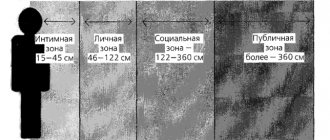Communication as a form of communication involves the exchange of information, thoughts, values, and feelings. This term has Latin roots. Literally translated, the concept of communication means “common”, “shared by all”. The exchange of information leads to the mutual understanding necessary to achieve the goal. Let us next consider the features of communication in an organization.
Classification of communications
It is carried out according to various criteria. Types of communication are distinguished by the composition of participants. So it can be mass, group and interpersonal. Types of communication are distinguished depending on:
- Method of establishing and maintaining contact. According to this criterion, direct (immediate) and remote (mediated) communications are distinguished.
- Initiative of the participants. According to this criterion, passive and active interactions are distinguished.
- The degree of organization of information exchange. This criterion allows us to distinguish between organized and random communications.
- Sign systems used. Based on this feature, nonverbal and verbal interactions are distinguished.
In addition, there are forms of communication. Interaction can be carried out in the form of a discussion, negotiations, briefing, meeting, meeting, conversation, business correspondence, reception on personal matters, press conference, telephone conversation, presentation, and so on.
What are types of communications?
People exchange information, which constitutes the communication process. What are types of communications? These are ways of people interacting with each other. They occur at the level of exchange of various ideas, views, opinions, perceptions, attitudes, feelings, non-verbal and verbal.
Communications are:
- Organizational. They, in turn, are:
- External and internal.
- Formal and informal.
- Horizontal.
- Interpersonal. They, in turn, are:
- Suggestive.
- Persuasive.
- Expressive.
- Cognitive.
- Ritual.
They are distinguished by what information people exchange, what roles they play, what goals they pursue, etc.
Living in a society where each person has his own opinion, worldview, rules of life and expectations, it is sometimes not easy to become a good conversationalist. If you lived among animals, it would be much easier for you. All animals are the same, they are all guided by instincts. But as long as you live among people, you will always have to deal with moods that change quickly, views that do not coincide with yours, aggression and defenses that you need to overcome, and differences in language understanding. All the people of your country speak the same language, but each spoken word is understood differently by the individual interlocutor.
What could be the secret to successful communication? If you want to successfully communicate with another person, consider their opinion. You don’t need to love someone else’s point of view, you don’t need to change your mind. If you want to successfully develop a relationship with another person, consider their opinion as well as your own.
The fact is that many people begin to argue and quarrel because their opinions differ. It would be amazing if all people had the same point of view. It's certainly easy to communicate with someone who sees the world the same way you do. But still, people are different, brought up in different traditions and conditions, which naturally affects how they will look at the world around them.
Don't change your opinion if you prefer it. But accept the right to the existence of other people's opinions. If your interlocutor expresses an opinion opposite to yours, accept the right to his existence. You may continue to disagree with this point of view. You can continue to dislike other people's opinions. But to humiliate, insult, or belittle the significance of this opinion is the same as humiliating the person who expresses it. This does not lead to successful communication. Most likely, you will alienate your interlocutor by insulting his point of view.
The secret to successful communication is to allow the other person to have their opinion and let them know that they have a right to it. You don't agree with his opinion. But you don't downplay its importance. Respect for someone else's point of view, no matter how unpleasant it may be for you, is respect for the interlocutor who expressed it. This is noticeable to another person, which makes them want to communicate with you again and again.
Interpersonal exchange of information
The condition for successful communication of this type is the creation by the participants of a common reality, outside of which interaction cannot take place at all. This premise is referred to by researchers as the contractual aspect of exchange. The main forms of communication and their effectiveness are determined by the parameters of individuals. The key ones are functional, motivational and cognitive characteristics. The latter includes various characteristics through which the inner world of a person is formed in the course of his accumulation of cognitive experience. We are talking, in particular, about knowledge of communication codes, self-awareness, introspection, metacommunication skills, and the ability to adequately assess a partner’s capabilities. These characteristics should also include prejudices and myths, beliefs and stereotypes.
The motivational parameter is determined by the needs of individuals. If they are absent, then, accordingly, there is no interaction or pseudo-communication is present. The functional indicator includes 3 characteristics. They determine the competence of an individual. Such characteristics are practical knowledge of verbal and non-verbal communication means, the ability to construct discourse in accordance with the rules of etiquette and code norms.
Types and types of communications
Page 1 of 3Next ⇒Communication as connection, communication, message, transfer of information: meanings, directions, forms and spheres of functioning
(There are no specifics in the first question, so we read all subsequent questions and think through the answers to the teacher’s questions ourselves. The first question contains what I could find and what he gave)
Communication is the exchange of meaning (information) by transmitting messages through various means (words, signs, behavior, material artifacts).
Communication is the exchange of intellectual and emotional information between people. Communication refers to the connecting organizational processes. Communication is necessary to make any important management decision.
Types of communications:
1) External - between the organization and its external environment (advertising, PR, annual financial statements, telephone conversations, etc.)
2) Internal:
A). Vertical communications – when information moves through hierarchy levels:
— Descending – from higher levels to lower ones. This is how information about current tasks, changes in priorities, recommended procedures, etc. is transmitted.
- Ascending - from lower levels to higher ones, they perform the function of notifying the top about what is happening below, management learns about current problems, emerging conflicts.
B) Horizontal communications - between divisions and departments, such exchange of information is necessary to coordinate tasks and actions.
C) Communications of the type leader - subordinate, as well as the leader - his work group (advisory or staff communications) are important for the organization - i.e. diagonal communications.
D) there are also informal communications - these are something like rumors
The basic model of communication is known in the form of the classical formula of G. Lasswell
(1948): This formula is a model of communication in which the participants and elements of the communicative act can be distinguished:
· sender
b
- communicator
(can be either a person or an organization);
· message
(what is the content of the message and in what form; consists of symbols, can be oral, written or visual);
· channel
(through which channel the message is transmitted and received: the path of physical transmission of the message, the means by which the message is transmitted);
· recipient - communicator
(can be either an individual or an organization);
· consequences
.
Forms of communication. Forms of communication include discussions, conversations, meetings, sessions, negotiations, briefings, press conferences, presentations, receptions on personal matters, telephone conversations, business correspondence, etc.
Spheres of communication. The spheres of communication are united by the concept of specialized communication. Traditionally, the following are distinguished: the sphere of everyday, political, scientific, educational, pedagogical, legal, medical, religious, industrial communication.
Types and types of communications
Types of communication are distinguished by the composition of communicants: (interpersonal, group and mass communication)
.
1) Interpersonal communication is the process of exchanging messages and their interpretation by two or more individuals who have come into direct contact.
The effectiveness of interpersonal communication will be determined by the parameters of individuals as communicative individuals. The defining parameters for a communicative personality are three: motivational, cognitive and functional. (V.P. Konetskaya).
· Motivational parameter
determined by communication needs. If there is no need, then there is no communication, or there is pseudo-communication.
· Cognitive parameter
includes many characteristics that form the inner world of an individual in the process of accumulating cognitive experience: knowledge of communication codes, introspection and self-awareness, the ability to adequately assess the communicative horizon of a partner, myths and prejudices, stereotypes and beliefs.
· Functional Parameter
includes three characteristics that determine the communicative competence of an individual: practical knowledge of verbal and non-verbal means of communication; the ability to vary communication means in the communication process in connection with changing situations; constructing discourse in accordance with code norms and etiquette rules.
Depending on the way they use their communicative potential, a person can be classified as one or another type:
— Dominant communicator: strives to take the initiative, does not like to be interrupted, is harsh, mocking, speaks louder than others.
— Mobile communicator: easily enters into a conversation, moves from topic to topic, speaks a lot, interestingly and with pleasure, does not get lost in an unfamiliar communication situation.
— Rigid communicator: experiences difficulties in the contact-establishing phase of communication, then is clear and logical.
— Introverted communicator: does not strive to take the initiative, gives it away, is shy and modest, constrained in an unexpected communication situation.
2) Group communication. Group communication occurs when there is direct communication between a small number of people who know each other well and constantly interact with each other.
The lower limit of the group is usually called a dyad (communication of two people) or triad (communication of three people); the upper one depends on the nature of its activities. Group communication functions. Communication in a small group, in addition to being informative, performs the following functions: forming consent, ensuring coordinated actions, and developing a special group culture.
Communicative structure of a small group. In a small group, various information is distributed through communication networks. These networks are centralized
and
decentralized
.
1. In centralized networks, mainly one person disseminates information important to the group around him.
Types of centralized communication networks:
· Frontal - the participants do not come into contact, but are in each other’s field of vision.
· Radial - all information is transmitted to group members only through a central person.
· Hierarchical - a structure with two or more levels of subordination of group members.
2. In decentralized networks, participants are equal, each of them can receive, process and transmit information, and directly communicate with other network participants.
Types of decentralized communication structures:
· Chain - information is transmitted sequentially from one group member to another.
· Circular - here all members of the group, without exception, have the same opportunities. Information can circulate endlessly between group members, supplemented and clarified.
· Complete – there are no obstacles to free communication and transfer of information.
The process of information exchange in organizations can be divided into two categories: planned, or formal, transfer of information (in the form of forms) and unplanned, or informal, transfer of information (rumors, conversations).
Depending on the direction of information flow, communications are divided into horizontal and vertical. The vertical direction, in turn, is divided into descending and ascending. There are also diagonal ones (manager and subordinate of another leader)
3) Mass communication (MC) - the process of disseminating information (knowledge, spiritual values, moral and legal norms, etc.) using technical means to numerically large, dispersed audiences.
Two conceptual approaches to the emergence of mass communication can be distinguished. According to one (Yu.P. Budantsev) - the emergence and development of MK means is synchronous with the emergence and development of human society. According to the second approach (G. Tarde, U. Eco), mass communication appears at a time when there is: an industrial-type society; communication channels ensuring its receipt by an indefinite circle of addressees; groups of producers who develop and release messages industrially.
Mass communication is characterized by:
— the presence of technical means ensuring regularity and replication;
— social significance of information;
— mass audience;
— multichannel and the ability to choose communication means.
Participants in the process
communication becomes not separate individuals, but mythologized collective subjects: people, party, government, army
Mass communication is characterized by multichannel nature: visual, auditory, audio-visual channels, oral or written forms of communication, etc. are used.
Functions of MK.
In the domestic theory of communication, four functions of MC are distinguished: informational; regulating; cultural; socialization of the individual.
Depending on the audience’s reaction to mass communication messages, two main directions have been identified in the theory of MC:
— Human-oriented approach. Proponents of this approach proceed from the fact that people selectively perceive information coming from the media.
— Media-oriented approach. This approach is based on the fact that a person is subject to the action of mass communication
Types of communications:
· according to the method of establishing and maintaining contact, communications are divided into immediate (direct), indirect (remote);
· according to the initiative of communicators, communications are divided into active and passive;
· according to the degree of organization, communications are divided into random and organized;
· depending on the sign systems used, communications are divided into verbal and non-verbal (see question 3 and 4)
.
Forms of communication. Forms of communication include discussions, conversations, meetings, sessions, negotiations, briefings, press conferences, presentations, receptions on personal matters, telephone conversations, business correspondence, etc.
1Next ⇒
What makes your dreams come true? One hundred percent, unshakable confidence in your...
What to do if there is no reciprocity? And now let's come down from heaven to earth. Have you landed? Let's continue the conversation...
Live by the rule: IS THERE NOT MUCH THING IN THE WORLD EXISTING? It is no coincidence that I emphasize that the space in your head is limited, but there is a lot of information around, and that your right...
Conflicts in family life. How can I change this? It is rare that a marriage and relationship exists without conflict and tension. Everyone goes through this...
Didn't find what you were looking for? Use Google search on the site:
Group interaction
It arises in the process of direct communication of a small number of subjects who know each other well and constantly exchange information. The lower limit of such communication is usually a dyad or triad. The first involves the interaction of two, and the second - three individuals. The upper limit will depend on the nature of the group's activities. All forms of communication in a group, except informational, also implement other functions. For example, during interactions, agreement is formed, unity of action is ensured, and a certain culture is formed.
Types of marketing communications
There are no specific types of marketing communications. Rather, it is a strategy that a company chooses to present the product in the best possible way and encourage purchase. The product being presented can be a company, product or service. Marketers are engaged in making it more accessible and attractive to talk about their company and the service/product they want to sell.
Marketing communication is aimed at:
- Providing correct information to potential buyers about your product and how to sell it.
- Encouraging the client to give preference to products of a particular brand, company, or to make purchases in specific stores.
- Inducement to take action, namely to purchase a product.
There are two main types of marketing communications:
- Direct - involves direct communication between the seller and the buyer and inducing him to make a purchase. The result largely depends on the skills and desire of the seller, the ability to interest the buyer in his product. The positive side of this type of communication is that the seller can change his communication style, as if adapting to the buyer.
- Through an intermediary – involves addressing a large circle of different people. Disadvantage: the seller cannot adapt because he does not communicate with buyers. Plus – reaching a large number of people, providing them with the necessary information.
Common forms of marketing communication are advertising, branding and direct marketing. A brand is a certain image of a brand or company that evokes positive emotions due to the fact that the company always provides only high-quality services. The emphasis is on constant cooperation between the buyer and the seller, even if they have not seen each other in person.
Networks
In a small group, various information is disseminated through communication systems. They can be centralized or decentralized. In the first case, the subject disseminates information important to the group around himself. Centralized networks are divided into:
- Frontal. Within such a system, participants do not come into contact, but are within sight of each other.
- Radial. In such a system, information is transmitted to group members through a central entity.
- Hierarchical. These structures require two or more levels of subordination of participants.
In decentralized networks, group members are equal. Each participant can receive, process and transmit data, and communicate directly with other entities. Such a system can be in the form:
- Chains. Within this structure, information is disseminated sequentially from participant to participant.
- Circle. Under such a system, all group members have the same opportunities. In this case, information can endlessly circulate between participants, be clarified, and supplemented.
A decentralized data exchange system can be complete. In this case, there are no obstacles to free interaction.
How does social communication happen?
In the process of social communication, socially significant information is exchanged between two or more subjects. The essence of the communication process is the transfer of information to another subject.
This information can influence both the participants themselves and society as a whole. Social interaction (interaction) is impossible without such an important component as social communication.
Types of social communication
There are different classifications of social communication.
Depending on the means of presenting information, communication can be verbal and non-verbal .
Depending on the number of participants:
- interpersonal (interpersonal);
- massive.
According to style, direct and indirect communication are distinguished.
Purpose of the message:
- educational;
- suggestive;
- expressive;
- ritual;
- persuasive.
According to the form of the communicative event:
- phone conversation;
- meeting;
- rally;
- public speaking;
- lecture.
Verbal communication and its means
Verbal communication involves transmitting information in verbal form. It is the most common. The main means of this type of communication is speech. Speech can be internal and external.
Of these two varieties, only external speech belongs to communication, since it is addressed to other people.
Inner speech involves solving some problems in your mind, planning your activities, reading to yourself, etc.
External speech as a means of communication can be written and oral.
Written speech is more difficult to understand. It contains many hackneyed constructions, quite boring and emotionally dull (speech cliches). At the same time, this type of speech is considered more official, since the wording in it is more precise. Sentences in written speech must be composed in such a way as to avoid ambiguous interpretation.
Written speech exists in two aspects:
- writing is the presentation of speech signals using graphic symbols;
- reading is deciphering and understanding fixed graphic symbols.
Oral communication is more economical than written communication. She is more free in her choice of vocabulary and is emotionally charged. Sentences are formulated more simply; they can be exclamatory, interrogative, or motivating.
Thoughts may be unfinished. Oral speech has phonetic (pronunciation of sounds) and prosodic (pace and rhythm of speech, timbre of voice, intonation) components.
Sometimes prosodic components are classified as paraverbal communication.
There are two aspects to oral speech:
- speaking, i.e. sending information to another communication participant using acoustic signals;
- listening, i.e. perception and understanding of acoustic signals transmitted by another subject of communication.
Nonverbal communication and its means
In nonverbal communication, subjects convey information through gestures, facial expressions, body movements, etc. In addition to the listed primary means of nonverbal communication, there are also secondary ones. These include Morse code, programming languages, etc.
Psychologists note that a person receives the bulk of information precisely by observing the facial expressions, body movements, and gestures of his interlocutor. With the help of nonverbal means of communication, an individual can win over other people, because they emotionally color his speech.
Recently, style of clothing, hairstyle, interior design in the office, etc. have also begun to be classified as nonverbal means of communication.
Direct and indirect communication
Depending on the style, communication can be direct or indirect. In the process of such communication, the degree of openness of a person is revealed. The choice of communication style is directly related to the culture of a particular people. European and American cultures are characterized by a more rigid, direct, open nature of communication. Here they want to get the clearest possible answer from the interlocutor.
But eastern culture prefers softer communication. The speech here is replete with ambiguous phrases. There are almost no direct answers “yes” and “no”. You have to guess about agreement or disagreement based on the context of the conversation. This style of communication is especially common in Japan, South Korea, and partly in China.
Suggestive, cognitive, ritual, expressive and persuasive communication
Suggestive communication is used mainly in business negotiations. Its goal is to force the business partner to change his position. Suggestive communication is carried out in the form of debates, trainings, press conferences, briefings, rallies and conversations. A special form of this type of communication is advertising.
In order to force another subject of communication to change his opinion, the following means are used:
- special techniques of suggestion (instructions, hints, orders, approval or condemnation, illusion of choice, etc.);
- manipulation techniques - blackmail, threats, warnings, etc.
The purpose of cognitive communication is to expand the partner’s knowledge and convey new information to him. To organize this type of communication, it is important to take into account the cognitive capabilities of the other participant, his conceptual level and attitude towards assimilating new information.
Forms of cognitive communication are lectures, seminars, colloquiums, conversations, consultations, reports, etc. The means used here are argumentation, identification of cause-and-effect relationships, evidence, comparative analysis, and comments.
Ritual communication involves subjects observing pre-prescribed forms of behavior and wearing special masks imposed by society. An individual may accept these social rituals, perform them because “that’s the way it is” or out of fear of public censure.
Such interaction, most often, is carried out without the psychological component of a person, since the interlocutor acts here as a necessary attribute, but not a full-fledged participant in communication.
Examples of such communication include corporate events, etiquette speeches, etc.
The purpose of expressive communication is to convey feelings, experiences, encourage action, and create the necessary psycho-emotional mood in the other participant in the conversation.
The means of such communication are:
- acting skills;
- rich gestures and facial expressions;
- demonstration of sincere feelings;
- emotional vocabulary;
- audio and video materials.
Persuasive communication is aimed at making another subject a like-minded person, an ally, arousing in him the necessary feelings, changing his values, and creating motivation to perform certain actions.
Persuasive communication is carried out in the form of disputes, negotiations, round tables, conferences, etc.
The means used are explanations, evidence, comparative analysis, compliments, demonstration of advantages, and creation of an atmosphere of trust.
Specifics
The choice of one network or another will depend on the form of communication and the purposes of data exchange. It is advisable to transmit information through centralized systems when information must be conveyed to all people, it is necessary to organizationally unite participants, and stimulate leadership development. Meanwhile, it is worth noting that within the framework of centralized networks, the implementation of creative and complex tasks becomes significantly more difficult. Frequent use of such systems may contribute to decreased subject satisfaction with group participation. Decentralized networks are used in practice to solve creative and complex problems. They are also effective in increasing participant satisfaction and developing interpersonal relationships.
Types of nonverbal communication
Nonverbal communication involves the complete absence of speech and the use of only your body. These are facial expressions, body position, gestures, body movements, etc. Every nation has one or another type of nonverbal communication, which depends on the culture and the meaning of each gesture. That is why it is very important to be familiar with those types of non-verbal communication that are accepted in other people.
Quite rarely, nonverbal communication is independent. It is usually used in conjunction with words. Nonverbal communication in this case is complementary, more fully revealing the meaning of what was said. Only when people absolutely do not know each other’s language do they try to convey their thoughts through descriptive gestures.
Types of nonverbal communication are:
- Kinesics is the use of gestures and poses that are accepted in the society of a particular culture. They are perceived unambiguously.
- Tactile behavior - touching the interlocutor. Depending on what kind of relationship people are in, one touch or another occurs, with one intensity or another, or is completely excluded.
- Sensory - the perception of the interlocutor through the smell, warmth, sensations that he causes.
- Proxemics – spatial relationships. How far away are the interlocutors from each other? There are 4 zones here: intimate, personal, social and public. If partners are not in the zone that suits their relationship, this leads to misunderstandings and conflicts.
- Chronemics is the use of time frames.
- Paraverbal communication is a special style of timbre, intonation, and pronunciation of the voice.
Nonverbal communication is complementary to verbal communication. It is often perceived as the most truthful source of information.
Sharing information within an organization
The process of interaction in a company can be divided into planned (formal) dissemination of information and informal (unplanned) transfer of data. In the first case, standard forms (forms) are used. Communications in this case will take relatively little time. The use of standard forms provides a number of advantages for the recipient of information. In particular, the subject can specify the category of information that he needs in his work. The key disadvantage of this form of communication is the lack of flexibility.
What is communicative communication and how is it different from ordinary communication?
Articles on the topic
- The primary goal of raising children in modern society 05/20/2021
- Education of feelings - how a person reacts to different situations 05.20.2021
- Communication etiquette as an important part of communication activities 02/23/2021
- Interaction between family and school - unity of education and training 02/18/2021
Communication differs from communication in the following ways:
- directional information from the source of information to the listener;
- there is a specific goal of the conversation;
- there are no emotional connections, no personal reactions between the participants in the conversation.
If the exchange of information occurs between equal subjects, then this can no longer be called communication - it is communication. The same thing happens if emotions appear in a conversation, various sharp reactions appear, likes and dislikes for certain objects appear. Proper communication is essential for business and interpersonal relationships.
Communicative communication can only be built by creating a certain interaction. Also, both parties, on equal terms, must be ready to participate in the exchange of information.
The structure of communicative communication has such important components as:
- source of information - the subject of interaction who is going to share the information he has;
- transmitter - indicates the method of transmission (speech, writing);
- communication channel - the path that information travels before being perceived by the subject (personal communication, letter, newspaper);
- receiver - deciphers information into signals understandable to the brain; the receiver refers to vision, hearing and thinking;
- recipient - the person who should receive the information.
It is also worth understanding that communication can be not only business, but also everyday. The first includes professional, which is seriously influenced by various rituals and traditions.
Directions of information flow
On this basis, communications are divided into vertical and horizontal. The former, in turn, include upward and downward flows of information. In the latter case, the information flow moves from one level to another, lower one. An example would be the interaction between a manager and subordinates. Upward communication of information is used to provide feedback from employees to their boss. Such methods of communication are used to convey tasks to subordinates, inform management about the results of work and current problems. The horizontal direction involves the interaction of participants of equal rank, as well as groups of equal importance.
Mass information exchange
It is carried out using technical means. The information is distributed to dispersed and large audiences. Mass communications are also characterized by:
- Social significance of information.
- Possibility of choice and multi-channel communication means.
The participants in such interaction are not individuals, but collective entities. For example, it could be the army, the people, the government. The social significance of such information exchange lies in compliance with specific social expectations and demands.
Mass interaction, especially in modern times, is characterized by multichannel nature. In particular, auditory, visual, audio-visual, written, and oral forms of communication are used. The sender of the data is a social institution or a mythologized subject. The recipients are target groups that are united according to a number of socially significant characteristics.
Types of mass communication
Mass communication means addressing a large number of people, where close relationships are not established, but you can get information, learn some news, and become part of society. The types of mass communication are as follows:
- Verbal and non-verbal.
- Performance, mythological and artistic.
- Formal and informal. Formal means transmitting information through texts. Informal - these are fables, gossip, rumors, jokes, songs and other informal types of transmission of public information.
The main types of mass communication are mass media, telecommunications and computer science. All of them are publicly available and quickly disseminate information. The press, television, and the Internet make it possible to quickly disseminate the necessary information and form public opinion. At the same time, the disadvantage is that people who perceive mass information do not criticize it.
Outrage or agreement is only an expression of one’s attitude towards what was received. Critical analysis is a check of the reliability of information, its correspondence to reality, usefulness for perception, etc. Many people do not analyze critically, but only express their negative or positive attitude towards what they hear.
Mass interaction features
The following communication tasks are distinguished:
- Informational. This function consists of providing the mass listener, viewer, and reader with up-to-date information about a wide variety of areas of activity.
- Regulating. Mass data exchange has an impact on the formation of individual and group consciousness, public opinion, and the creation of stereotypes. This allows you to control social behavior. People usually accept those ethical requirements, norms, principles that are promoted in the media as a positive stereotype of clothing style, lifestyle, communication, etc. This is how a person is socialized in accordance with the norms that are preferred at a given historical stage.
- Cultural. This function involves familiarizing society with the achievements of art and culture. It promotes awareness of the need for continuity of values and preservation of traditions.
Main types of communication
The main types of communication are intercultural, interpersonal and organizational. Intercultural communication style is divided depending on transmission techniques, styles and methods:
- Paraverbal.
- Verbal.
- Non-verbal.
When relationships are established between people, they begin to communicate. This is called interpersonal communication, which is aimed at resolving issues, adequate perception of each other, and pragmatic goals.
Cognitive communication is aimed at providing additional or new information that will expand, reveal, and complement the existing one. This involves transmitting not only scientific data, but also expressing one’s opinion.
This may include reports, lectures, seminars, where information processed by another person is transmitted in order to familiarize other people with it. This allows you to improve and expand your horizons. Communicative means are evidence, summarizing, argumentation, commenting, speech culture, etc.
Persuasive communication is aimed at creating certain attitudes and attitudes on the issue under discussion. All this happens at the level of discussions, disputes, negotiations, press conferences, etc. The emphasis is on a person’s attitudes, emotional culture, and individual motivation. The goal is to change the interlocutor’s beliefs to those that were offered to him, to transfer him to one’s side, and to gain an ally.
Expressive communication is aimed at expressing emotions, conveying feelings and experiences to another person. This can happen at rallies, briefings, and in works of fiction where descriptive forms are often used. The purpose of this communication is to change the partner’s mood to the one that was needed.
Suggestive communication is aimed at changing attitudes, attitudes, behavior and other deep properties of a person. This is possible if a person is suggestible, he is not provided with complete information, he is weak in spirit, and susceptible to the influence of the crowd. At any event where a large group of people gathers, suggestive communication occurs, for example, meetings, press conferences, rallies, trainings, advertising, etc.
Suggestive communication occurs by explaining the attitudes that are being suggested, by changing mood, blackmail, threat, psychological terror and other methods. The goal is to introduce the desired attitude to a person, whether he wants it or not.
Ritual communication is used in certain areas to show belonging, commitment, and support the culture of an organization. Specific words and expressions may be used here and specific behavior is required.
QMS
In mass communication, special means are used, which are channels and transmitters through which information is distributed over large areas. The modern system includes several links. In particular, the QMS includes media, computer science and telecommunications. The first include the press, audiovisual channels (radio, teletexts, etc.), and information services. The media consist of technical means of recording, replicating, copying, storing data, as well as the constant, systematic dissemination of large volumes of musical, verbal, and figurative information.








